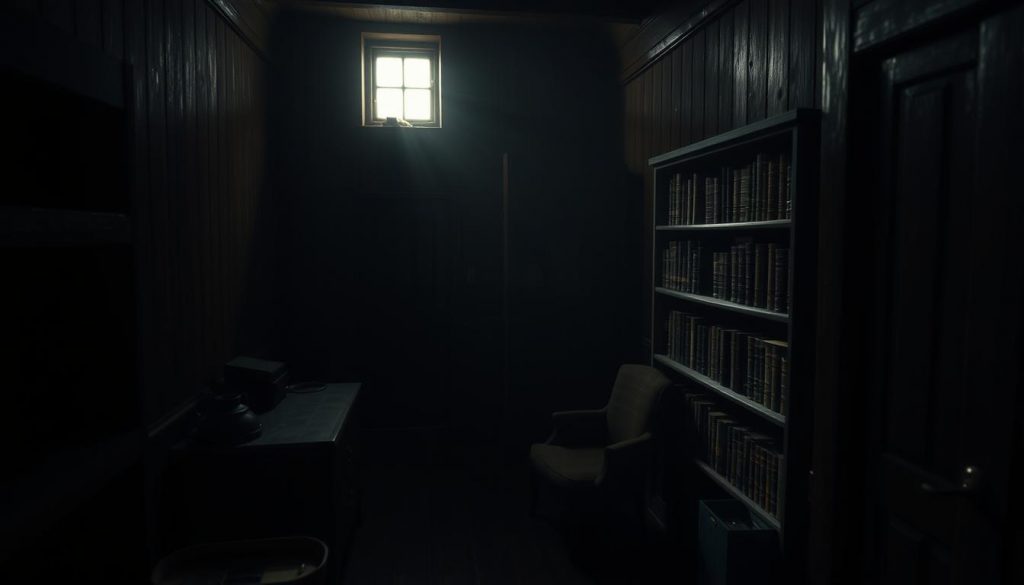Anne Frank’s diary became her trusted friend during history’s darkest moments. This small notebook touched millions of hearts worldwide. It’s a powerful testament to human resilience.
Anne received a simple gift on her thirteenth birthday. Her “Anne Frank diary” became an extraordinary window into the human spirit. It revealed hope during unimaginable circumstances.
Writing became Anne’s sanctuary in the cramped Secret Annex. Her wartime diary captured personal experiences and universal struggles. It showcased dignity and survival during tough times.
Anne’s documentation was more than just journaling. Her historical journal became a beacon of understanding. It revealed a young girl’s inner world during the Holocaust.
This birthday gift evolved into a crucial 20th-century literary document. It offers readers an intimate glimpse into a war-changed world. Anne’s insights continue to inspire and educate today.
The Background of Anne Frank’s Diary
Anne Frank’s story unfolds in a complex historical landscape. Born in 1929 in Frankfurt, Germany, she faced Nazi persecution early on. Her family’s journey reflects the challenges Jewish families endured during World War II.
At age four, Anne’s family moved to Amsterdam. They sought safety from the rising antisemitism in Germany. This relocation marked a significant turning point in their lives.
A Glimpse into Anne’s Life Before the Diary
Anne’s childhood was full of disruptions. The Nazi occupation changed her family’s life dramatically. Her father lost his business due to Nazi rules.
In June 1942, Anne received her first diary. It was a gift for her 13th birthday. This diary would become a powerful historical document.
- Forced relocation from Germany to Holland in 1933
- Increasing restrictions on Jewish economic activities
- Loss of her father’s business due to Nazi regulations
- Receiving her first diary on her 13th birthday in June 1942
The Historical Context of World War II
Anne Frank’s diary holds immense historical significance. The Nazi occupation created fear and uncertainty for Jewish families. Anne’s words became a voice for millions who were silenced.
| Year | Significant Event |
|---|---|
| 1940 | German occupation of Amsterdam |
| 1942 | Frank family goes into hiding |
| 1944 | Nazis raid their hiding place |
Anne’s diary is a powerful testament to human resilience. It provides an intimate look into the experiences of those who suffered under Nazi rule. Her personal account brings history to life in a unique way.
Her words would ultimately become a profound voice for millions who were silenced.
The Importance of Writing for Anne
Anne Frank found solace in writing during the Holocaust. Her diary became a tool for self-reflection. It helped her cope with isolation and fear.
Writing was Anne’s emotional lifeline. Her diary served many purposes beyond just recording events.

- Expressing innermost thoughts and feelings
- Maintaining personal identity during extreme circumstances
- Creating a sense of normalcy in an abnormal situation
- Documenting her experiences for potential future readers
Expression of Thoughts and Feelings
At 13, Anne discovered writing’s therapeutic power. Her cultural influence extended far beyond her immediate circumstances. Her diary captured the emotions of a young girl facing unthinkable challenges.
“I can shake off everything as I write; my sorrows disappear, my courage is reborn.” – Anne Frank
Coping with Isolation and Fear
The diary became Anne’s friend during two years of hiding. It helped her process emotions and keep hope alive.
Anne’s diary has had a remarkable impact:
| Statistic | Impact |
|---|---|
| Book Sales | Over 30 million copies worldwide |
| Translations | More than 70 languages |
| Student Understanding | 85% gain deeper Holocaust comprehension |
Anne’s diary shows how writing can help process trauma. It proves that hope and dignity can survive even in dark times.
The Location of the Secret Annex
In Amsterdam’s heart, the Secret Annex at Prinsengracht 263 sheltered Anne Frank’s family during Nazi occupation. This hidden space became the birthplace of a powerful historical diary. It transformed into more than just a shelter.

Otto Frank rented the entire property in 1940. The building’s history dated back to 1635. This compact 450 square feet space became a lifeline for eight persecuted individuals.
Life in Hiding
Survival in the Secret Annex required extraordinary discipline. The inhabitants kept silent during working hours to avoid detection. Their daily routine was carefully planned.
- Minimal movement during daytime business hours
- Careful communication to prevent noise
- Shared responsibilities for food and maintenance
- Constant vigilance against potential discovery
The Significance of the Space
This small space became Anne Frank’s world. Her historical diary captured remarkable insights into human resilience. It was more than just a hiding place.
“In spite of everything, I still believe that people are really good at heart.” – Anne Frank
| Secret Annex Details | Specific Information |
|---|---|
| Total Space | 450 square feet (42 m²) |
| Hiding Duration | 2 years and 1 month |
| Number of Occupants | 8 people |
| Museum Establishment | 3 May 1960 |
The Anne Frank House now attracts 1.2 million visitors yearly. This once-secret location has become a powerful memorial of diary history. It stands as a testament to human courage.
Anne’s Writing Style and Voice
Anne Frank’s diary is a powerful symbol of human resilience. Her writing captures a young girl’s journey through extraordinary times. Her emotional depth and unexpected wit shine through her words.

Anne’s diary goes beyond typical teenage writing. Written between ages thirteen and fifteen, her entries blend youthful curiosity with mature insight. Her narrative showcases a complex understanding of her situation.
Humor as a Survival Mechanism
Anne’s writings during the Holocaust show her clever use of humor. Her witty observations serve as a powerful coping tool. This demonstrates her remarkable emotional intelligence in difficult times.
- Uses sharp, clever commentary
- Transforms difficult moments through comedy
- Maintains hope through lighthearted reflections
Emotional Complexity and Maturity
Anne’s writing style reveals a rich emotional landscape. Her diary entries explore complex themes with surprising depth. She delves into personal identity, relationships, and human nature under stress.
- Personal identity
- Relationships
- Human nature under extreme stress
“I keep my ideals, because in spite of everything I still believe that people are really good at heart.”
| Writing Characteristic | Description |
|---|---|
| Narrative Style | Intimate, conversational, deeply personal |
| Emotional Range | From playful humor to profound sadness |
| Literary Devices | Symbolism, imagery, cultural allusions |
Anne’s unique voice continues to touch readers worldwide. Her diary remains a timeless piece of historical literature. It speaks directly to the human experience, bridging generations through her words.
Key Themes Found in the Diary
Anne Frank’s diary offers a glimpse into human experience during a dark period. Her writing reveals insights into adolescence, identity, and resilience. These themes continue to captivate readers worldwide.
Coming of Age and Identity
Anne Frank, at 13, began a journey of self-discovery in the Secret Annex. Her diary captures teenage struggles, made unique by World War II circumstances.
She explored personal thoughts and emotions while navigating complex relationships. Anne tried to understand her place in a world torn by conflict.
- Exploring personal thoughts and emotions
- Navigating complex relationships
- Understanding her place in a world torn apart by conflict

Hope Amidst Despair
Anne’s diary radiates hope despite overwhelming challenges. Her self-reflection shows an ability to find light in dark situations.
“I keep my ideals, because in spite of everything I still believe that people are really good at heart.”
| Theme | Key Characteristics |
|---|---|
| Identity Formation | Personal growth, self-understanding |
| Resilience | Maintaining optimism under extreme pressure |
| Human Connection | Seeking understanding despite isolation |
Anne Frank’s diary has significant historical importance beyond a personal account. It has sold over 30 million copies and been translated into more than 70 languages.
Her words educate and inspire generations about the human spirit’s endurance. Her writing shows how self-reflection can be a powerful survival tool.
Anne transformed personal pain into a universal message of hope. Her diary continues to resonate with readers around the world.
The Diary’s Evolution over Time
Anne Frank’s wartime diary shows a remarkable transformation. Her personal writing reveals growth during the toughest time of her life. This journey of self-discovery is truly extraordinary.

Anne’s writing changed greatly between 1942 and 1944. Her early entries reflected a young girl’s view. Over time, her writing became more thoughtful and complex.
Changes in Tone and Content
The progression of Anne’s diary can be traced through several key developments:
- In early entries, her writing focused on daily experiences
- By spring 1944, her tone became more critical and mature
- Her language shifted from childlike observations to deeper emotional insights
Reflection of Maturing Perspectives
Anne’s writing showed impressive growth. Her entries from different times reveal her intellectual and emotional development.
“I keep my ideals, because in spite of everything I still believe that people are really good at heart.” – Anne Frank
| Period | Writing Characteristics |
|---|---|
| June-December 1942 | Naive, child-like observations |
| January-April 1944 | Increasingly reflective and self-aware |
| April-August 1944 | Sophisticated, emotionally complex writing |
Anne decided to rewrite parts of her diary for possible publication. This choice greatly changed her writing style. Her personal notes became a powerful historical story.
Today, Anne’s diary still connects with readers worldwide. Its transformation makes it a timeless piece of literature.
How the Diary Was Discovered
Anne Frank’s diary has an incredible story. It survived the Nazi raid on August 4, 1944. Two brave women, Miep Gies and Bep Voskuijl, saved this historical treasure.
The Heroic Efforts of Miep Gies
Miep Gies became a hero after the raid. She gathered and protected Anne’s diary and notebooks. Her actions saved this priceless historical document.
- Rescued Anne’s writings immediately after the arrest
- Kept the diary hidden without reading its contents
- Preserved the manuscript for Otto Frank’s return
The Diary’s Journey After the War
Anne Frank’s diary gained importance after the war. Otto Frank, the sole survivor, received it from Miep Gies. He decided to publish Anne’s writings, sharing her story worldwide.
“I keep my ideals, because in spite of everything I still believe that people are really good at heart.” – Anne Frank
The diary’s impact was huge. Published in 1947, it’s now in over 70 languages. It shows hope and strength during a dark time in history.
A young girl’s personal writing became a global symbol. It teaches us about understanding and human dignity.
A Legacy of Remembrance
Anne Frank’s diary is more than a historical record. It reminds us of individual experiences during the Holocaust. It connects generations and teaches about compassion and human rights.
The Legacy of Anne Frank’s Diary
Anne Frank’s diary is a powerful testament to human resilience during history’s darkest periods. Her writings offer an intimate glimpse into Holocaust experiences. This famous diary has touched millions of hearts worldwide.
Frank’s narrative has become a vital educational tool. It helps generations understand the human impact of war and discrimination. Her diary showcases the importance of writing in preserving history.
Influence on Literature and Education
Frank’s diary has profoundly influenced literature and education by:
- Providing a personal perspective on Holocaust experiences
- Inspiring countless educational programs
- Encouraging empathy and understanding
Significance in Holocaust Remembrance
The global reach of Anne Frank’s story is remarkable. Consider these impactful statistics:
| Metric | Impact |
|---|---|
| Copies Sold | Over 30 million worldwide |
| Languages Translated | 70 different languages |
| Age When Writing | 13-15 years old |
Her words continue to educate and inspire, ensuring that the lessons of the Holocaust are never forgotten.
“I keep my ideals, because in spite of everything I still believe that people are really good at heart.” – Anne Frank
Anne Frank’s extraordinary diary has made her a symbol of hope and resilience. Her words showcase the power of the human spirit in the face of adversity.
The Diary Translated Into Multiple Languages
Anne Frank’s journal became a global symbol of resilience and hope. Her personal writings transcended language barriers. They evolved into a universal message that touched hearts worldwide.
Anne’s writings made history soon after World War II. Het Achterhuis (The Annex) was first published in 1947. The initial print run was 3,000 copies.
The diary’s influence quickly spread across borders. Its cultural impact grew rapidly, reaching far beyond its Dutch origins.
Global Linguistic Journey
The diary’s remarkable translation journey includes:
- First translated into French and German in 1950
- English translation released in 1952
- Currently available in over 75 languages
- More than 30 million copies sold worldwide
Cultural Adaptations and Challenges
Translating Anne’s diary was a unique challenge. Translators worked hard to keep her voice and emotions intact. They carefully interpreted her words for different cultures.
“In spite of everything, I still believe that people are really good at heart.” – Anne Frank
The translations showed how personal stories can connect people across cultures. Anne’s words became accessible to readers worldwide. Her message continues to inspire new generations, crossing language and time barriers.
The Role of Technology in Preserving the Diary
Technology has transformed how we understand Anne Frank’s historical journal. The digital age has made her story more accessible. Researchers and students can now explore this profound diary history easily.
Digital preservation is crucial for maintaining the diary’s integrity. Modern tech protects and shares her story globally. It creates innovative ways to reach audiences worldwide.
Digitization and Accessibility
The Anne Frank House museum leads in digital conservation techniques. Their efforts are groundbreaking and far-reaching.
- High-resolution digital scanning of original manuscripts
- Creating online archives accessible worldwide
- Implementing advanced preservation technologies
Online Resources for Learning
Researchers now have unprecedented access to Anne Frank’s diary. Sophisticated digital platforms offer various resources.
- Virtual museum tours
- Interactive digital exhibits
- Translated content in multiple languages
“Technology allows us to keep Anne’s memory alive and her story relevant for future generations.”
Modern research techniques have uncovered hidden details within the diary. Data science companies like Xomnia analyze historical documents. Their specialized programs reveal new insights into Anne’s written legacy.
| Digital Preservation Milestone | Year |
|---|---|
| First Digital Archive Launch | 2005 |
| Online Manuscript Digitization | 2009 |
| Global Digital Access Expansion | 2015 |
Technological innovations keep Anne Frank’s story alive and inspiring. Her personal diary has become a global educational resource. It continues to educate people worldwide about this important period in history.
Inspiring Change Through Anne’s Words
Anne Frank’s diary is a powerful catalyst for human rights advocacy. Her story inspires generations, showing the importance of writing for understanding and empathy. Her words continue to shape our world today.
Anne’s diary has touched millions worldwide. It sparks conversations about tolerance, resilience, and hope. Her influence extends far beyond her tragic life story.
Advocating for Human Rights
Anne’s legacy has inspired many human rights initiatives. Several organizations have emerged from her powerful narrative:
- The Anne Frank Center for Mutual Respect
- Youth Initiative programs in schools nationwide
- Holocaust education and awareness campaigns
Lessons for Today’s Generations
Anne’s message remains crucial in our modern world. Students and teachers still find inspiration in her unique perspective.
“In spite of everything, I still believe people are really good at heart.”
| Global Impact | Statistics |
|---|---|
| Diary Translations | 70 languages |
| Copies Sold | 30 million |
| Educational Reach | Worldwide school curricula |
Anne Frank’s intimate thoughts teach us about compassion and resilience. Her words remind us to stand against injustice. Her story continues to spark global understanding and create meaningful change.
Conclusion: The Lasting Impact of Anne Frank’s Diary
Anne Frank’s wartime diary is a powerful testament to human resilience. It offers an intimate look into a young girl’s life during dark times. Her writings continue to inspire generations to fight prejudice and embrace compassion.
Reading Anne’s story is more than just a history lesson. It shows how personal voices can preserve human dignity. Her diary reveals how individual experiences can shed light on larger historical truths.
Anne’s words encourage us to reflect on empathy and understanding. They inspire us to stand against discrimination in our own lives.
Your Connection to Anne’s Story
Anne Frank is a universal symbol of hope and human potential. Her words show how personal stories can change our view of history. By engaging with her story, you join a global community.
This community is committed to remembering past injustices. It works to learn from history and prevent future wrongs.
Encouragement to Explore and Reflect
Anne’s legacy is about more than just remembrance. It’s about active engagement with history and society. Her diary challenges us to look beyond surface-level understanding.
It encourages us to explore the complexities of human experience. Let her story inspire you to speak up for justice. Become a voice for compassion in your own community.
FAQ
Why did Anne Frank start writing her diary?
Anne Frank got a diary for her birthday before going into hiding. It became her trusted friend during Nazi occupation. The diary helped her express herself in tough times.
How long did Anne Frank write her diary?
Anne wrote for about two years, from June 12, 1942, to August 1, 1944. She detailed her life in the Secret Annex in Amsterdam. Anne hid there with her family and four others.
Was Anne Frank planning to publish her diary?
Yes, Anne rewrote parts of her diary to publish after the war. She wanted her story to be a historical record of life during the Holocaust.
Who preserved Anne Frank’s diary after her arrest?
Miep Gies, who helped hide the Franks, saved Anne’s diary after their arrest. She kept it safe and gave it to Otto Frank, Anne’s father. Otto was the only survivor from the hidden group.
How many languages has Anne Frank’s diary been translated into?
The diary has been translated into more than 70 languages. It’s one of the most read personal accounts of the Holocaust. The diary is a powerful tool for Holocaust education worldwide.
What makes Anne Frank’s diary so significant?
Anne’s diary offers a personal view of the Holocaust from a young person’s perspective. It shows hope and growth in tough times. The diary humanizes the tragedy through Anne’s honest and eloquent writing.
How old was Anne Frank when she wrote her diary?
Anne started writing at 13 and continued until she was 15. Her writings show deep emotions and maturity. She captured her thoughts during a very challenging time in her life.
Can I see the original diary?
The original diary is at the Anne Frank House in Amsterdam, Netherlands. Digital versions and archives are available online. People worldwide can access and study this important historical document.
Source Links
- The publication of the diary
- The complete works of Anne Frank
- Anne Frank facts – National Geographic Kids
- Anne Frank: Diary
- Explore Anne Frank’s Diary | Anne Frank Trust UK
- The Enduring Voice of Anne Frank: Writing as a Window to the Human Spirit
- Holocaust Educational Trust – Creative Responses to ‘The Diary of Anne Frank’
- Anne, from Diarist to Icon
- The history of the Secret Annex
- Anne Frank House
- The Diary of Anne Frank Analysis
- Celebrating the Genres of Anne Frank’s Diary
- The Diary of Anne Frank LitChart Teacher Edition
- Anne Frank Analysis – Story Factory
- Themes in The Diary
- The two versions of Anne’s diary
- The diaries of Anne Frank
- How Anne Frank’s Diary came to be published
- Diary of a Young Girl | Anne Frank, History, & Facts | Britannica
- How did Anne’s diary become so famous?
- Honoring Anne Frank’s Legacy – The College of Arts & Sciences at Texas A&M University
- The Victory Of Kindness Over Cruelty: Anne Frank’s Legacy – Downe House School
- Anne Frank: International Symbol of Holocaust Victimhood
- Anne Frank’s Diary: Versions, Translations, and Ownership, Oh My!
- Anne Frank in Translation
- Anne Frank in Translation
- The Hunt For Anne Frank’s Betrayer Continues – Now With High-Tech
- Dutch researchers uncover dirty jokes in Anne Frank’s diary
- Copyright, Money and Abuse: Lessons from the Diary of Anne Frank – Centre for Intellectual Property and Information Technology law
- Anne Frank the Writer | Share your thoughts
- Anne Frank’s Words Still Resonate Today
- Who was Anne Frank? Why her legacy is still fought over today
- Holocaust diaries by Anne Frank and other young writers
- Who was Anne Frank?

